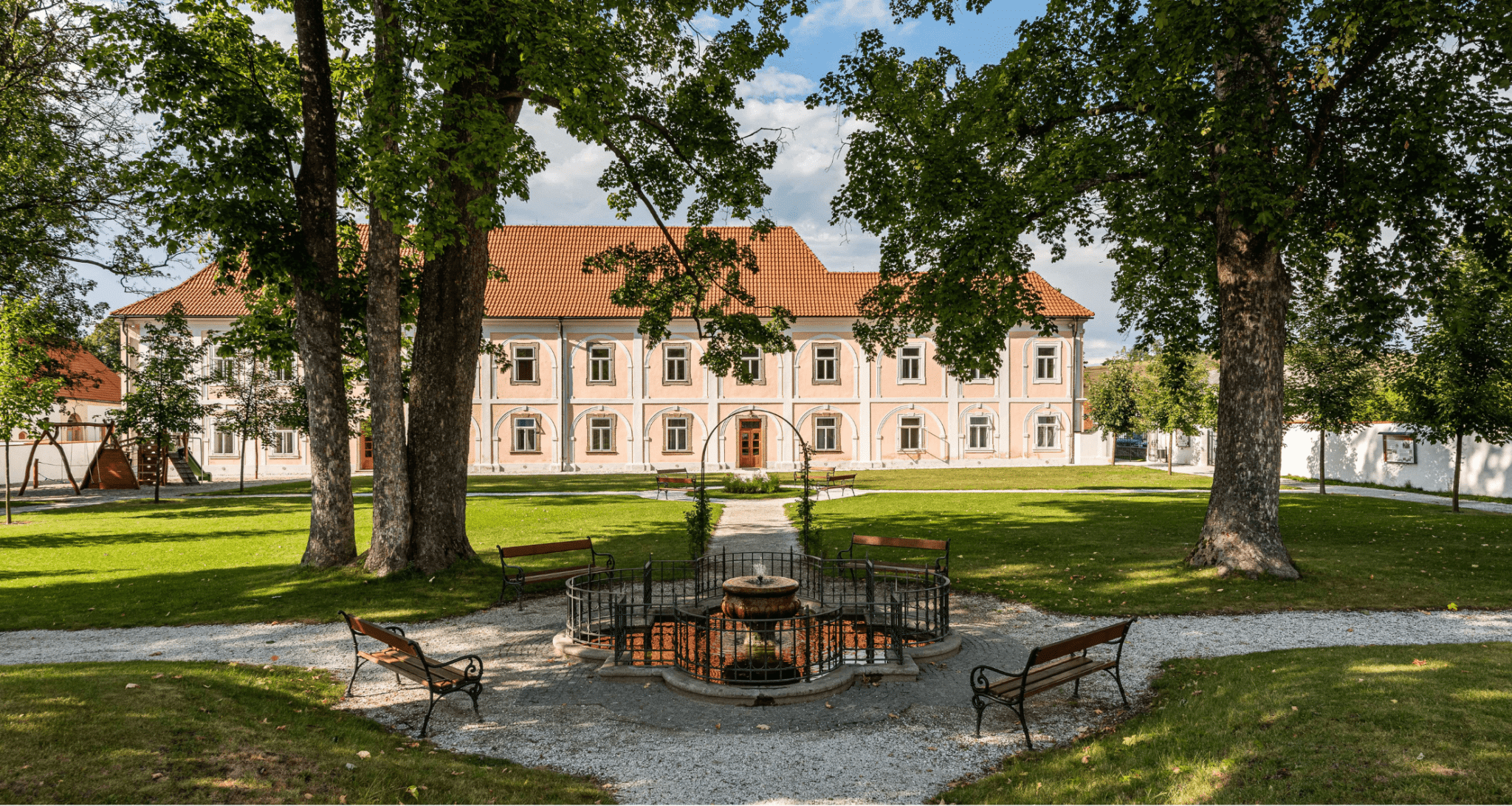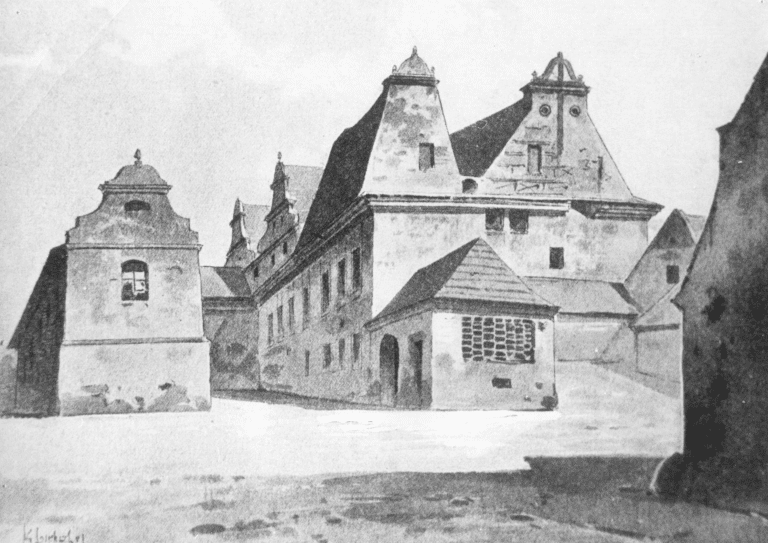History of Hrádek Castle
The first mention of Hrádek dates back to 1298. It is a deed of gift. For the village of Hrádek, this is the oldest preserved document mentioning Přibyslav of Hrádek. From 1588, the Hrádek estate belonged to the knightly family of the Lords of Račín from Račín, who probably rebuilt the medieval fortress into a Renaissance castle after 1590. The Račín family owned Hrádek until 1686. After the death of Vojtěch Arnošt Račín, the owners of the castle changed rapidly.
The significant year for the castle was 1731 when it became the property of the noble family Des Fours de Montu et Athienville. The Hrádek estate belonged to them for almost 100 years. The first owner was Jan Ferdinand. His nephew Bedřich Des Fours rebuilt the Renaissance castle, adding a new Baroque castle to the old Renaissance one. In 1775, a Baroque chapel dedicated to St. Walburga was added. The appearance of the castle has been preserved to this day. The Des Fours (Desfours) family owned the estate for almost a hundred years and contributed to its prosperity.
The next heir was Baron Karl Theodor Sturmfeder, under whose administration, in 1847, the castle became home to the educator and priest Vojtěch Hlinka (1817 – 1904). Literary activity provided him relief from his demanding work as the tutor of his mentally challenged son Otakar (from his second marriage). Vojtěch Hlinka was an enthusiastic supporter of the national revival movement and was a successful writer of folk stories, novellas, and plays, which he signed under the pseudonym František Pravda. He published over 150 books. Although he did not originally intend to, he remained in Hrádek until his death. He lived a content life filled with social and spiritual activities. He is buried in the cemetery by the Church of St. Lawrence in Zdouni. In 1867, the estate passed to the family of Karel Theodor Sturmfeder’s daughter Ottilie, married to Baron Karel Henneberg-Spiegel. From 1898, the Hrádek estate was managed by their only son, Baron Bohumil Henneberg-Spiegel (1861 – 1934), and his wife Anna Marie, née Countess of Harrach. After the death of Mrs. Countess (1938), their property was divided among relatives from the Hertling and Windischgrätz families and the bishop’s consistory in České Budějovice, as the couple had no children. After the end of World War II, the castle and the large estate were confiscated. The Prague Burgrave took over the castle as a recreational facility. After the noble owners, the castle was fully furnished and in good condition, but after six months of management by the Prague Burgrave, only bare walls remained. The castle was transformed into apartments for about 20 families. No one took care of the castle’s maintenance, and it deteriorated, becoming increasingly uninhabitable. In 1976, the castle tower collapsed due to its emergency condition. Tenants gradually moved out. The only miracle is that the interior of the castle chapel has survived. The year 2000 became the turning point for the castle when it was purchased by Ing. Arch. Pavel Lejsek. After many years, work began to rescue the building. On June 24, 2010, after a demanding ten-year reconstruction, the castle was opened to the public as a hotel and restaurant. In the following years, agricultural buildings and courtyards were gradually repaired. In 2012, the castle park was revitalized. In 2014, a wellness center was established in the former agricultural building. In 2015, the chapel of St. Walburga and the baroque granary building were completely reconstructed, with the latter housing the Gallery Hrádek “Space of Games and Inspiration,” where children are introduced to the history of Hrádek Castle in the 19th century in a playful way. Next to the granary is an adventure mini-golf course for families with children. Since 2016, the utility garden with an Empire orangery has again become part of the castle complex. Projects are currently underway to repair the brewery buildings and the demolished tower. Weddings and receptions, cultural, social, and corporate events, guided tours with a guide or with the owner himself, are also part of life at the castle.

















